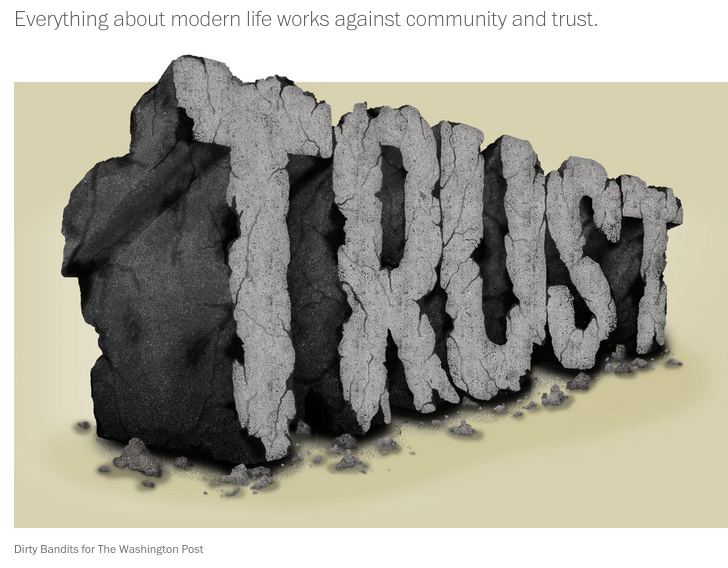The easiest sell of President Trump’s life is that a “corrupt” media produces “fake news.” After all, fewer than 2 in 10 Americans have “a lot” of trust in news organizations, the Pew Research Center has found, and we live in a “Matrix”-infused “conspiracy culture,” according to social scientists, where one is thought to be impossibly simple to not understand that the world is ruled by collusion and machination.
Trump has helped make trust a big deal for media types, and they are now searching for ways to regain the faith of their readers. To combat the “fake news” charge, the New York Times, for example, is running full-page ads and even bought a television spot during the Oscars declaring that “the truth is more important now than ever.” For some, the problem is that journalists have allowed too much of their personalities to creep into their work. Pittsburgh Post-Gazette editor David Shribman prescribes “less analysis and more reporting, less personality and more facts.” For others, there’s a need to demonstrate that journalists are not faceless elites but real people. Washington Post opinion writer Dana Milbank wrote of his newsroom colleagues: “They hail from all corners of this country, from farms and small towns, the children of immigrants and factory workers, preachers and teachers.” But even local papers, the ones most closely connected to their readers, are struggling to defend their integrity. One editor of a rural California paper accepted an op-ed about the danger of “fake news” in an attempt to instill some faith among the anti-press crowd.
You can hear similarly fretful discussions in dozens of other professions. The president has maligned politicians, scientists, judges, teachers, labor union leaders and intelligence officials, among others. “Donald Trump’s most damaging legacy may be a lower-trust America,” the Economist’s Lexington column predicted. Trust in American institutions, however, has been in decline for some time. Trump is merely feeding on that sentiment.




